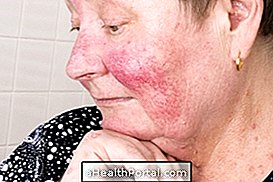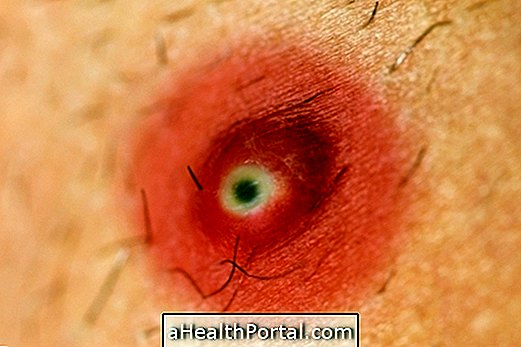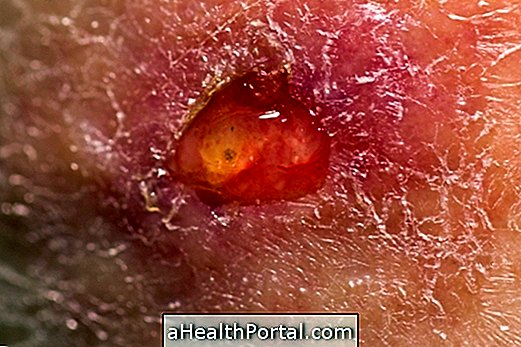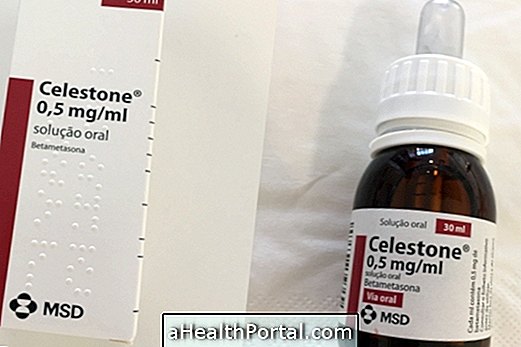Early identification of the development of melanoma in the skin is the best way to ensure the success of the treatment because it prevents skin cancer from developing in excess and is able to create difficult to eliminate metastases, even with chemotherapy.
So, even if you take care of the sun every day, such as passing the sunscreen or avoiding the hottest hours, it is very important to evaluate the skin at least once a month, even in the region of the scalp, to identify if there are new or different signs that may be a sign of cancer. Learn how to properly care for your skin when you need sun.
One of the best ways to assess whether a sign can be melanoma is by looking at its characteristics, following a rule known as ABCD. If the stain has more than two of these characteristics consult a dermatologist.
A - asymmetry
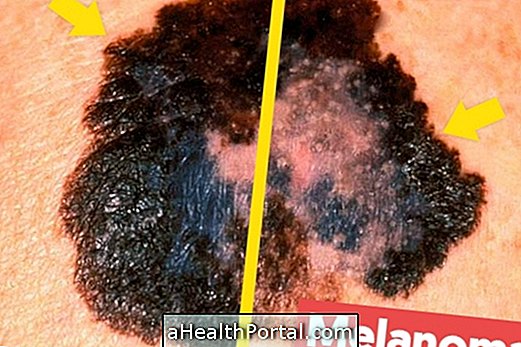
Generally, the signs most likely to be malignant are asymmetric, so if you draw an imaginary line in the middle of the signal, the two parts are not similar.
Most of the signals are symmetrical and thus are not an alarm signal, but there are also benign and asymmetric signals. Thus, if the signal is asymmetrical, it should be evaluated by a dermatologist just to ensure that it is not malignant.
B - borders

A signal with regular and smooth edges is usually benign and presents no health hazard. Already signs with irregular edges and little marked can be a sign of cancer in the skin.
C - color

The normal and risk-free signs of cancer usually have a brown coloration, with no major changes in color. The signs of melanoma usually have darker colors or even a mixture of various colors, such as black, blue, red or white.
D - diameter

The melanoma spot usually has a diameter greater than 6 millimeters. Therefore, if a sign is larger than normal size, it is very important to consult the dermatologist, even if it has a normal color, with regular edges and is symmetrical.
In addition, malignant signs may also grow over time, starting as a small pint that grows to become a spot larger than 6 mm.
Other Skin Cancer Symptoms
Although the best way to identify a possible melanoma is to see the spot on the skin, some people may have symptoms such as:
- Feeling of burning;
- Frequent itching;
- Bleeding.
These symptoms appear exactly at the spot of the spot, but can also spread to a few inches around.
In addition to melanoma, there are other, less dangerous types of skin cancer that also need to be treated as early as possible. See the main symptoms of each type of skin cancer.
How to confirm the diagnosis
To confirm or misdiagnose melanoma or other skin cancer is very important to consult a dermatologist, so that it evaluates the characteristics of the spot. If cancer is suspected, your doctor may advise you to have a small local surgery to remove the blemish. After that, the piece removed is sent to the laboratory to assess if there are any cancer cells.
If cancer cells are found, the doctor may recommend removing more skin or starting chemotherapy, for example, depending on the degree of cancer development.
Take a closer look at the treatment options for skin cancer.
